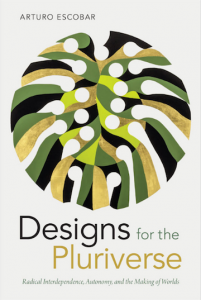
Duke University Press.
AIRE has spent a solid decade now experimenting with ways to develop community-based renewable energy projects. We consider honesty to be a virtue and if we walk that talk we’d have to say that we haven’t made a much of a dent in the dominant, dirty, deadly energy system we set out to help change. We have done some projects, yes. And, yes we have learned some things in the process. However, there are two things we are very confident in saying need to happen, and happen soon.
Although renewable energy installations may be growing, what if energy demand in the aggregate is also growing? If the appetite for energy grows unabated, will renewables keep up? What energy development model will prevail- profit-driven or public benefit? So, while we’re building community solar in all the right places, we need to wrestle with this question:
“How much energy is enough, and energy for what?”
Secondly, if we want to change the energy system, we will not find high leverage for that change by doing what we’ve been doing (the big We, including AIRE and all). We and others in our field certainly envision a new energy production and consumption paradigm– distributed, clean, democratic, public, etc.
“So the second question is where is that leverage for change?”
These kinds of questions underpin our work and are illuminated by a new book I’ll name in a moment. AIRE will continue to help nonprofits develop renewable energy projects, and we see great value in doing so. We believe the savings and benefits to the community or nonprofit organization are tangible and important. There’s also a larger benefit in pedagogical terms… “modes of revealing” (p. 133). So we’ve recognized that something else is needed to inform and accompany those project development efforts. We’ve been searching and asking the hard questions about what we do and what value it has. Part of the answer lies in how we situate our efforts in a bigger frame.
So we’ve committed to finding renewed footing on educational and “design thinking” work that helps connect the dots between a single solar project and that vision for a better energy system and big-picture wellbeing. There’s work to do to usher in the preconditions that allow for the emergence of the new energy system at the scope and scale we envision.
To this end, I recommend a book for those who may wish to take a deeper dive into the consciousness and mindset for changing the energy system and culture. Designs for the Pluriverse: Radical Interdependence, Autonomy, and the Making of Worlds by Arturo Escobar is provoking and indispensable. Arturo is certainly a gifted intellectual, but one who is willing to probe across diverse disciplinary boundaries often associated with the academy. He’s also a very nice person, humble and driven by questions that are important both to scholarship and literally life in general.
Pluriverse isn’t a book that you “read,” although if you aren’t familiar with Arturo’s writing, it’s VERY good! I customarily read and make my notes on the pages and flag them with small post-it notes. It only took a few pages for me to realize that I’d be literally marking every page so I ended up “studying” the text over a period of a month or so, and I did end up with virtually every page marked. Thus, it would be beyond my abilities in a very limited time and space to summarize Pluriverse. In fact, I don’t think it ought to be reduced to a summary. Read the book!
One thing that I constantly find myself repeating from the book is that “design designs.” We design and design designs us back, which points to the notion of consequences, often delayed, in a complex system, with climate change being a case in point. In that sense, the book is a mirror into which we can all look and ask of ourselves, our practices and institutions, what are we designing? Pluriverse gets into ontological approaches to design and that’s heady stuff. I’ve sat in circles with the author and others (including my own mentor, friend, and connection to Arturo) most of whom have had long and accomplished careers in academia, while their proteges, also in the circle, are well on their way. So I’ll leave design ontologies for you to wrap your brain around when you read the book. I will say that the intellectual dimension of ontologies has a use and can be translated into practice. That’s currently a work in progress for me.
But a couple relevant takeaways for now are these:
Indicative of Arturo’s humility and groundedness, he’s clear in the book that “everybody designs” and that design isn’t done only by “experts.”
He also rejects “dualisms” that are so pervasive in Western modes of thought– us/them, human/nature, jobs/environment, etc. in favor of “relationality.” All things are connected to all things.
Especially relevant for AIRE are a couple of Arturo’s propositions, “distributed agency” and “collaborative organizations.” (p. 159) How we get at these is a dialogue I’d like to encourage with others who are working in the broadly interrelated areas of sustainability. In our decade of work on community-owned energy we’ve experienced some good and some best not to repeat in terms of how we share agency and collaborate.
AIRE wants to be a part of creating new, diverse relations with organizations with innovative ways of understandings, forming and doing in a way that might eliminate the barriers that keep collaborations from being effective or authentic in achieving their desired end results. For me, Pluriverse provides some guidance and honestly, some hope that we’ll get there.